
| Glasswing (erroneously: Acraea andromache Eltringham, 1912) HELICONIINAE, NYMPHALIDAE, PAPILIONOIDEA | (donherbisonevans@yahoo.com) and Stella Crossley |
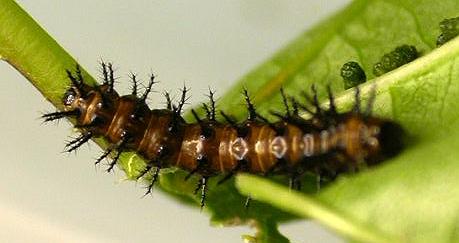
(Photo: courtesy of
Graeme Cocks, Townsville, Queensland)

| Glasswing (erroneously: Acraea andromache Eltringham, 1912) HELICONIINAE, NYMPHALIDAE, PAPILIONOIDEA | (donherbisonevans@yahoo.com) and Stella Crossley |

(Photo: courtesy of
Graeme Cocks, Townsville, Queensland)
These Caterpillars feed on various Passion vines ( PASSIFLORACEAE ), including the Australian natives :
as well as the introduced :
and also :
Sadly, the female butterfly will also lay her eggs on other introduced PASSIFLORACEAE such as:
but the caterpillars cannot thrive on these plants.
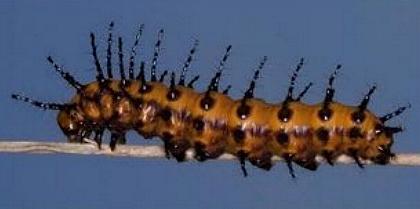
The caterpillars are brown, with branched black spines arising from black spots all over the body. The caterpillars bunch together initially, but as they mature, separate onto different leaves. They grow to a length of about 3 cms.
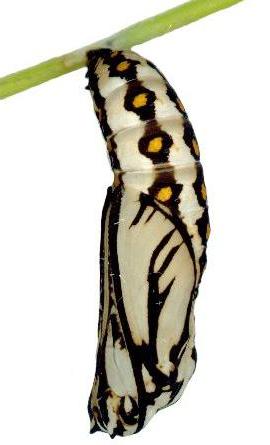
The pupa is cream, with striking black markings, and rows of black outlined orange spots along the abdomen. It has two blunt horns on its head. It hangs head downward by a silk cremaster from the foodplant. It has a length of about 2 cms.
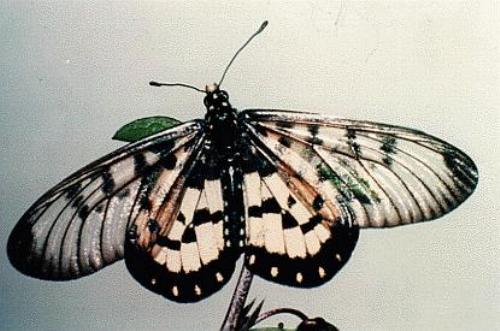
The forewings of the adult butterflies are transparent, with black spots.

The hindwings are white with a subterminal black arc, and a black border containing white spots. The mouthparts are unusual in being bright yellow. The butterflies have a wing span of about 6 cms. They are inclined to congregate around larval foodplants.

The eggs of this species are barrel-shaped, ribbed, and a creamy-yellow, and each has a height of about 1.5 mm. They are laid in clusters of a dozen or more, on a leaf or stem of a foodplant.
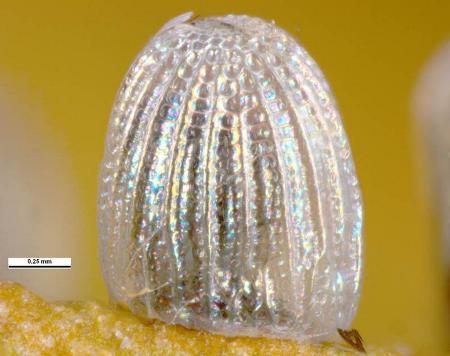
The species has been found in the south-west Pacific in:
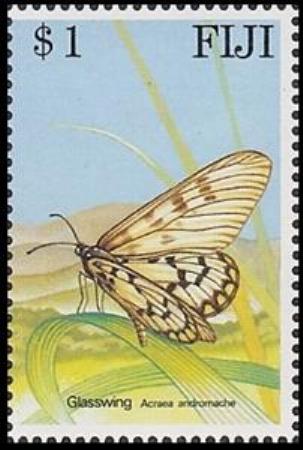
and in most of Australia, including:
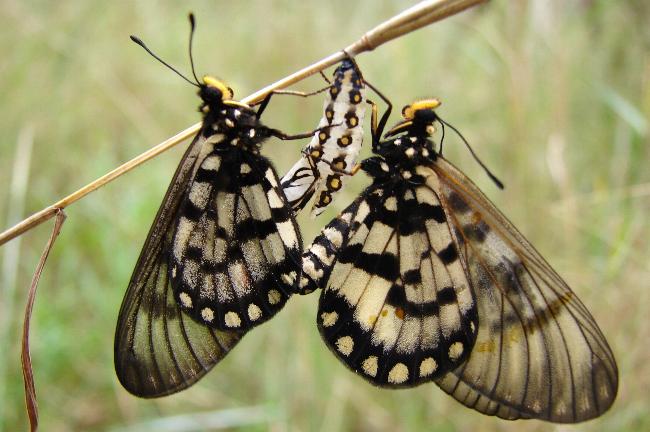
Further reading :
Michael F. Braby,
Butterflies of Australia,
CSIRO Publishing, Melbourne 2000, vol. 2, pp. 535-536.
Johan Christian Fabricius,
Historiae Natvralis Favtoribvs,
Systema Entomologiae,
1775, pp. 466-467, No. 102.
Wesley Jenkinson,
Life history notes on the Glasswing, Acraea andromacha
(Fabricius, 1775) (Lepidoptera: Nymphalidae: Heliconiinae),
Butterflies and Other Invertebrates Club,
Metamorphosis Australia,
Issue 101 (June 2021), pp. 2-6.
Frank Jordan & Helen Schwencke,
Create More Butterflies : a guide to 48 butterflies and their host-plants
Earthling Enterprises, Brisbane, 2005, pp. 21, 65.
 caterpillar |  butterflies |  Lepidoptera |  moths |  caterpillar |
(updated 22 August 2011, 20 November 2025)